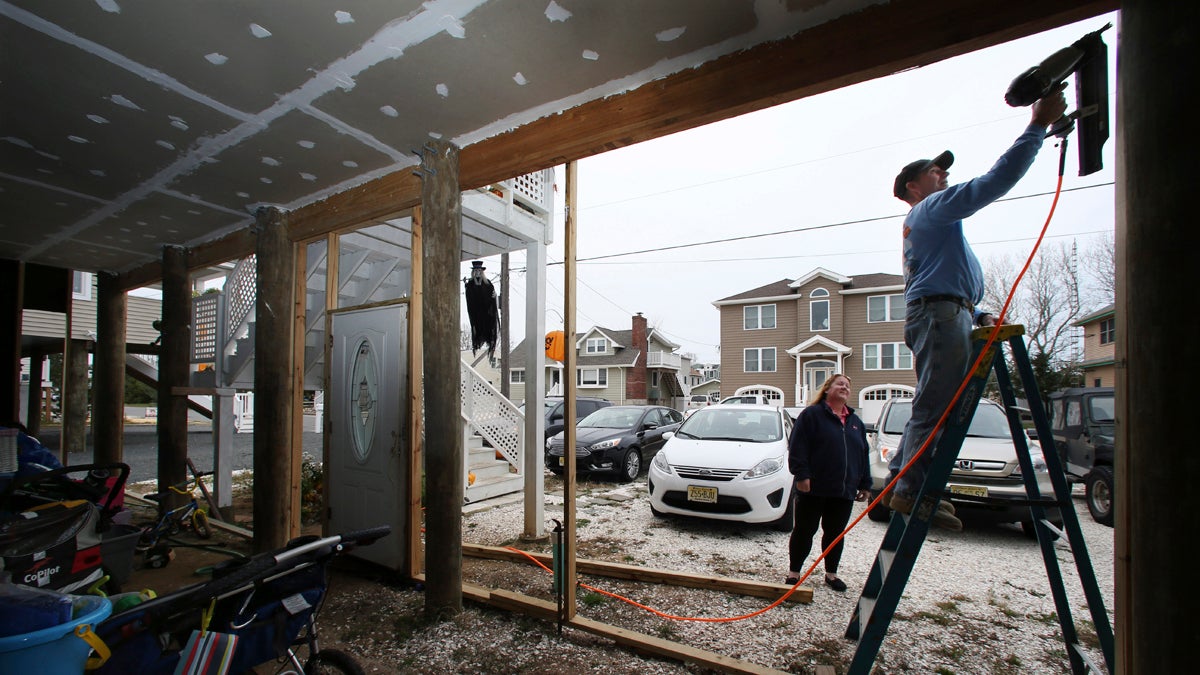Down the Shore, insurers increasingly planning for climate change
Listen
On Tuesday, while wife Dawn Markoski stands by, Stanley 'Sonny' Markoski works on their home that has been raised since being damaged, with about 27 inches of water in their house during Superstorm Sandy, in Long Beach Township, N.J. When FEMA announced that it would review Sandy-related claims to see if errors were made, the Markoskis submitted an application. The review concluded that they were owed an additional $55,972 in insurance money, nearly double what they had originally been paid. (Mel Evans/AP Photo)
In the three years since Superstorm Sandy, insurance companies have paid increasing attention to climate change, incorporating climate modeling and analysis into models to assess future risk.
Dennis Sugrue from Standard & Poor’s Ratings Services said the biggest names in insurance and reinsurance (those are the companies that insure insurers) have geologists, biologists and meteorologists on staff to model future risk.
“A lot of these larger, more sophisticated insurance companies are investing quite heavily in trying to understand extreme weather events and the risks associated with them,” Sagrue said, “and really be in touch with the most up-to-date scientific thinking as regards climate change.”
On-staff scientists are out of reach for smaller firms. But following Katrina, Sandy, and a slew of damaging storms in the past decade, smaller companies increasingly started adding climate change computer modeling to their risk projections.
Insurance Information Institute president Bob Hartwig said flooding from those storms served as a wake-up call.
“It’s absolutely the case that insurers did take all of this into account, the state of modeling associated with storm surge, for instance, has advanced significantly over the past three years, so insurers have a better understanding of the areas that are vulnerable to storm surge,” Hartwig said.
Still, Max Messervy, from the business sustainability advocacy group Ceres, said that while the insurance industry may be planning for climate change, it’s not talking about it in public yet.
“It matters that insurance companies won’t use the term ‘climate change’ because it can really muddy the public conversation that’s occurring,” Messervy said.
Standard and Poor’s Sagrue said climate projections aren’t really increasing insurance premiums yet. That’s because changes are projected to occur in the future, while policies for, say, homeowners insurance are written for a year at a time.
WHYY is your source for fact-based, in-depth journalism and information. As a nonprofit organization, we rely on financial support from readers like you. Please give today.

